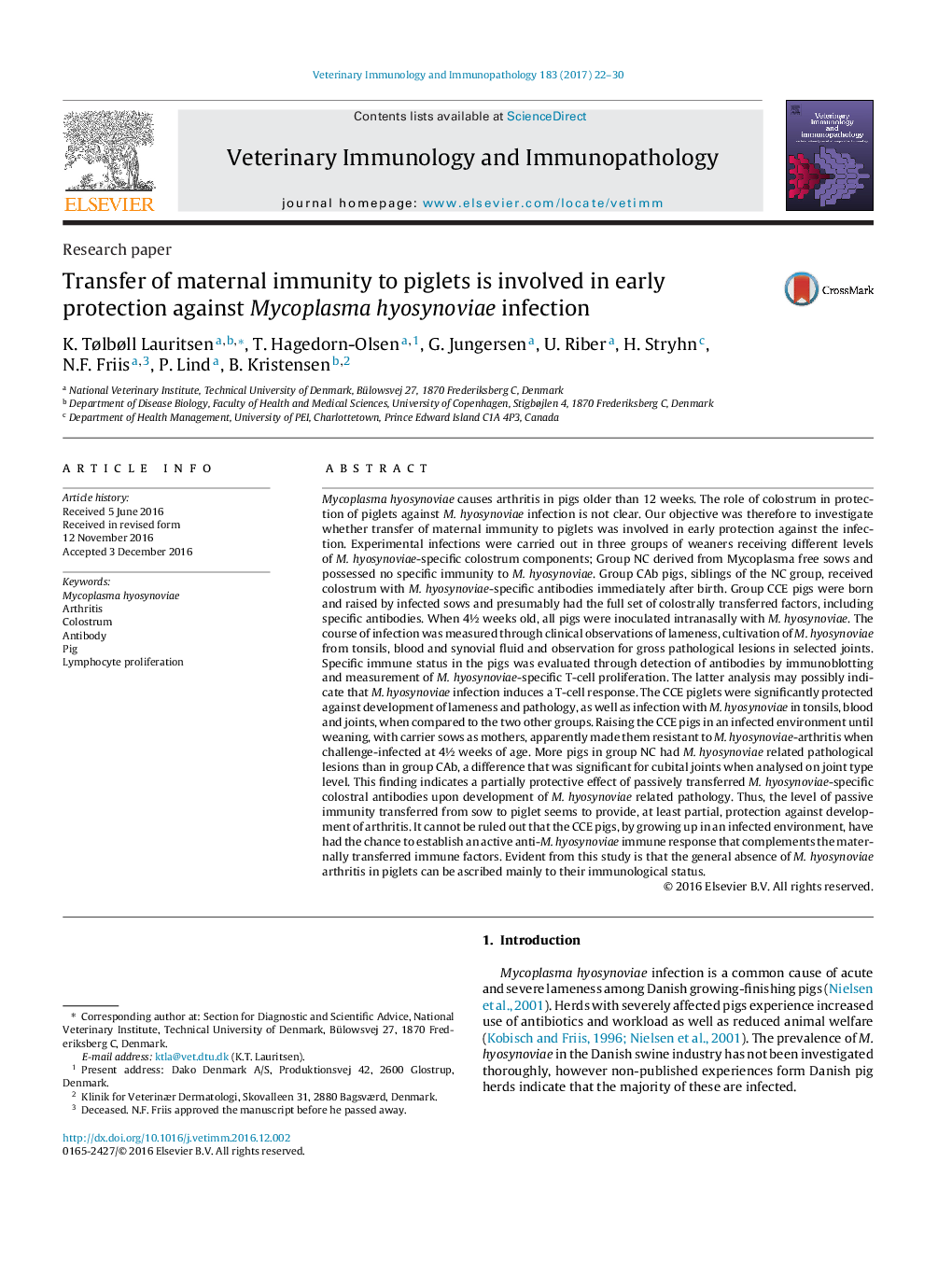| کد مقاله | کد نشریه | سال انتشار | مقاله انگلیسی | نسخه تمام متن |
|---|---|---|---|---|
| 5544816 | 1555001 | 2017 | 9 صفحه PDF | دانلود رایگان |
- Colostrum is involved in early protection against Mycoplasma hyosynoviae in piglets.
- Four week old pigs raised in infected farms are protected against M. hyosynoviae.
- Specific antibodies may have some protective effect against development of M. hyosynoviae arthritis.
- Immunologically naive 4-week-old pigs are susceptible to M. hyosynoviae infection.
- M. hyosynoviae has the potential of inducing an antigen-specific T-cell response.
Mycoplasma hyosynoviae causes arthritis in pigs older than 12 weeks. The role of colostrum in protection of piglets against M. hyosynoviae infection is not clear. Our objective was therefore to investigate whether transfer of maternal immunity to piglets was involved in early protection against the infection. Experimental infections were carried out in three groups of weaners receiving different levels of M. hyosynoviae-specific colostrum components; Group NC derived from Mycoplasma free sows and possessed no specific immunity to M. hyosynoviae. Group CAb pigs, siblings of the NC group, received colostrum with M. hyosynoviae-specific antibodies immediately after birth. Group CCE pigs were born and raised by infected sows and presumably had the full set of colostrally transferred factors, including specific antibodies. When 4½ weeks old, all pigs were inoculated intranasally with M. hyosynoviae. The course of infection was measured through clinical observations of lameness, cultivation of M. hyosynoviae from tonsils, blood and synovial fluid and observation for gross pathological lesions in selected joints. Specific immune status in the pigs was evaluated through detection of antibodies by immunoblotting and measurement of M. hyosynoviae-specific T-cell proliferation. The latter analysis may possibly indicate that M. hyosynoviae infection induces a T-cell response. The CCE piglets were significantly protected against development of lameness and pathology, as well as infection with M. hyosynoviae in tonsils, blood and joints, when compared to the two other groups. Raising the CCE pigs in an infected environment until weaning, with carrier sows as mothers, apparently made them resistant to M. hyosynoviae-arthritis when challenge-infected at 4½ weeks of age. More pigs in group NC had M. hyosynoviae related pathological lesions than in group CAb, a difference that was significant for cubital joints when analysed on joint type level. This finding indicates a partially protective effect of passively transferred M. hyosynoviae-specific colostral antibodies upon development of M. hyosynoviae related pathology. Thus, the level of passive immunity transferred from sow to piglet seems to provide, at least partial, protection against development of arthritis. It cannot be ruled out that the CCE pigs, by growing up in an infected environment, have had the chance to establish an active anti-M. hyosynoviae immune response that complements the maternally transferred immune factors. Evident from this study is that the general absence of M. hyosynoviae arthritis in piglets can be ascribed mainly to their immunological status.
Journal: Veterinary Immunology and Immunopathology - Volume 183, January 2017, Pages 22-30
